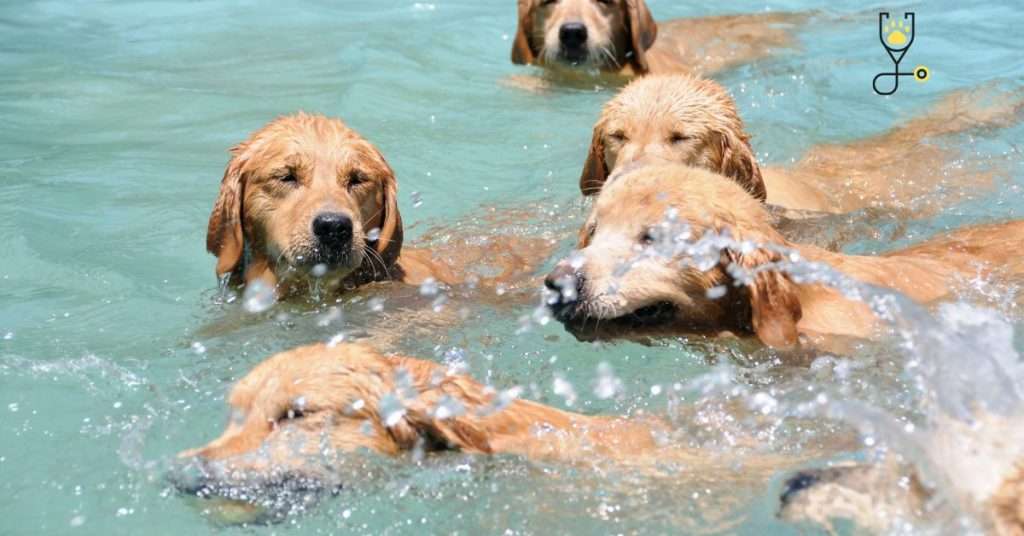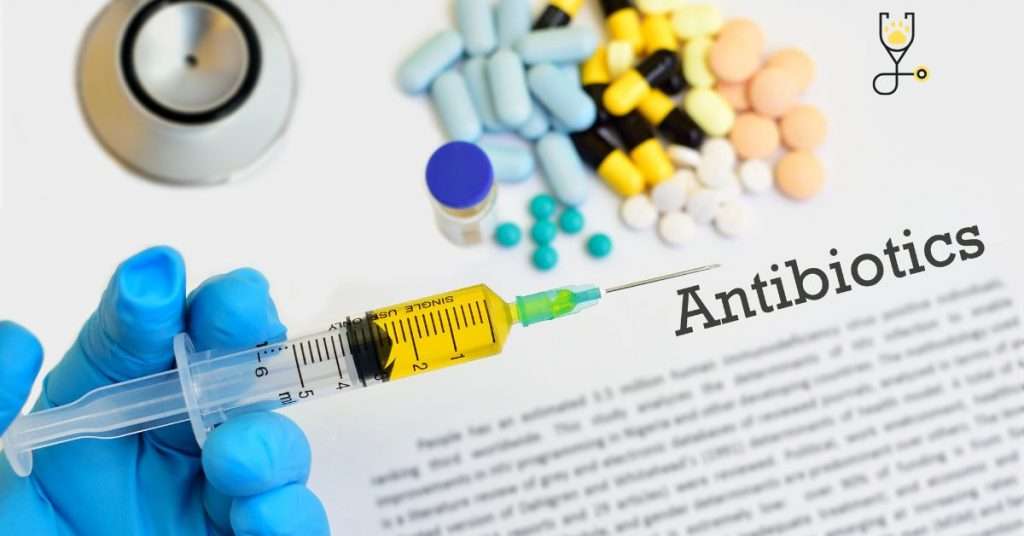If you’re a dog owner, then you should be aware of leptospirosis-an infection that is caused by bacteria and can lead to serious health problems in dogs. In this article, we’ll provide a complete overview of leptospirosis in dogs, including symptoms, treatment options, and prevention tips. We’ll also discuss how vets and doctors can diagnose the infection. So if your dog has been acting unusual or if you just want to learn more about leptospirosis, keep reading!
Learn More: How To Stop Hair Fall In Dogs?
What is Leptospirosis?
Leptospirosis is a bacterial infection that can affect both animals and humans. The bacteria that cause the infection are called Leptospira interrogans, and they’re typically found in water or soil that’s been contaminated with animal urine. When an animal (or person)comes into contact with contaminated water or soil, it can become infected with leptospirosis.
Dogs are most often exposed to leptospirosis through contaminated water, such as ponds, lakes, rivers, or puddles. The bacteria can also enter a dog’s body through cuts or mucous membranes (such as the eyes, nose, or mouth), which is why it’s important to keep your dog away from stagnant water and to regularly clean any wounds they may have.
More Susceptible Breeds to Leptospirosis
While leptospirosis can affect any dog, certain breeds are more susceptible to the infection, including:
– Bulldogs
– Cocker spaniels
– Collies
– Doberman pinschers
– German shepherds
– Golden retrievers
-Labrador retrievers
-Rottweilers
Causes of Leptospirosis In Dogs

Bacteria of the genus Leptospira are the causative agent of leptospirosis in dogs. These bacteria are transmitted through the urine of infected animals, which can contaminate water or soil. Transmission to dogs can occur through direct contact with contaminated urine or indirectly, through contact with contaminated soil or water.
The most common way for dogs to become infected with leptospirosis is by drinking contaminated water. Dogs that swim or drink from stagnant ponds, puddles, or other bodies of water are at risk of becoming infected. In addition, any dog that comes in contact with urine from an infected animal (including rodents) is also at risk.
MAIN CAUSES ARE
1. Rodents and other small mammals

The most common host of leptospira bacteria are rodents, such as rats and mice. These animals often live in close proximity to humans, which increases the risk of infection. Other small mammals, such as opossums, skunks, and raccoons, can also carry the bacteria.
2. Contaminate water
Leptospira bacteria can survive in water for long periods of time, making contaminated ponds, lakes, and rivers a common source of infection. The bacteria can also contaminate the soil, meaning that any contact with contaminated mud or soil can lead to infection.
3. Contact with infected animals
Infected animals can shed the bacteria in their urine, which can then contaminate the environment. This means that contact with an infected animal, or even its urine, can lead to infection.
4. Poor sanitation
Poor sanitation and hygiene practices can also lead to leptospirosis infections. The bacteria thrive in environments where there is poor sanitation, such as in slums or crowded areas. This is because bacteria can easily spread from person to person in these environments.
5. Travel to endemic areas
People who travel to areas where leptospirosis is endemic (such as parts of Asia, Africa, and South America) are at increased risk of infection. This is because they may come into contact with contaminated water or animals.
6. Occupations at risk
There are certain occupations that put people at increased risk of leptospirosis infection. This includes jobs that involve contact with contaminated water or soil, such as farmers, sewer workers, and animal handlers.
Read More: Common Skin Allergies in Dogs
SYMPTOMS OR SIGNS OF LEPTOSPIROSIS IN DOGS
The symptoms of leptospirosis in dogs can vary depending on the stage of the infection. In the early stages, symptoms may be mild and easily overlooked. However, as the disease progresses, symptoms will become more severe and can even be life-threatening.
Some of the most common symptoms of leptospirosis in dogs include:
1. Fever
2. Lethargy
3. Loss of appetite
4. Joint pain
5. Muscle pain
6. stiffness
7. Difficulty walking
8. Diarrhea
9. Vomiting
10. Jaundice (yellowing of the skin and whites of the eyes)
If your dog is showing any of these symptoms, it is important to seek veterinary treatment immediately. Left untreated, leptospirosis can cause organ damage and even death.
DIAGNOSING LEPTOSPIROSIS IN DOGS
If your dog is showing any signs of illness, it is important to seek veterinary treatment immediately. Your vet will perform a physical examination and take a history of your dog’s symptoms. They may also order blood and urine tests to look for signs of infection.
Leptospirosis can be difficult to diagnose, as the symptoms are similar to those of other diseases. In addition, the early stages of the disease can be very mild, making it easy to overlook. As a result, leptospirosis is often diagnosed using a combination of clinical signs, history, and laboratory testing.
TREATING LEPTOSPIROSIS IN DOGS
Leptospirosis is a serious disease that can be fatal if left untreated. Fortunately, it is treatable with antibiotics. Treatment should be started as soon as possible to give your dog the best chance of recovery.
BEST ANTIBIOTICS FOR TREATING LEPTOSPIROSIS
The best antibiotic for leptospirosis will depend on the stage of the infection. In the early stages, a short course of oral antibiotics may be sufficient. However, in more severe cases, intravenous antibiotics may be required.

Some of the most common antibiotics used to treat leptospirosis include:
1. Penicillin
2. Amoxicillin
3. Doxycycline
4. Ceftriaxone
5. Ciprofloxacin
In severe cases, hospitalization may be necessary. Your dog will likely need to be intensively monitored and treated with intravenous fluids and antibiotics. They may also require oxygen therapy and other supportive treatments.
Read More: Gallbladder Disorders In Dogs-Types, Causes, Symptoms &Treatment
PREVENTING LEPTOSPIROSIS IN DOGS
The best way to prevent leptospirosis is to vaccinate your dog against the disease. The vaccine is typically given as a booster shot every year.
In addition, you should take steps to avoid contaminated water and soil. This includes keeping your dog away from puddles, ponds, and other bodies of water that may be contaminated. You should also avoid letting your dog drink from bowls or containers that could be contaminated.
If you must travel to an area where leptospirosis is endemic, take precautions to avoid infection. This includes avoiding contact with contaminated water and animals. You should also practice good hygiene and wear protective clothing when outdoors.
Learn All About Common Health Issues in Dogs & Their Prevention in our detailed guide here.
PRECAUTIONS
1. Avoid contact with contaminated water or animals
2. Practice good hygiene
3. Wear protective clothing when outdoors
4. Keep your dog vaccinated against leptospirosis
5. Avoid letting your dog drink from bowls or containers that could be contaminated
6. Seek veterinary treatment immediately if your dog shows any signs of illness.
CONCLUSION
Leptospirosis is a serious disease that can be fatal if left untreated. Early diagnosis and treatment are essential for the best chance of recovery. Vaccination is the best way to prevent leptospirosis in dogs. You should also take precautions to avoid contact with contaminated water and animals. If you must travel to an area where leptospirosis is endemic, take precautions to avoid infection.
FAQS
1. What is leptospirosis?
Leptospirosis is a bacterial infection that can affect both animals and humans. It is caused by the bacteria Leptospira interrogans, which is found in contaminated water and soil.
2. How do dogs get leptospirosis?
Dogs typically get leptospirosis by coming into contact with contaminated water or soil. This can happen if they drink from puddles, ponds, or other bodies of water that may be contaminated.
3. What are the symptoms of leptospirosis in dogs?
The symptoms of leptospirosis can vary depending on the stage of the infection. In the early stages, symptoms may be mild and include fever, muscle pain, and lethargy. As the disease progresses, symptoms may become more severe and include vomiting, diarrhea, kidney failure, and seizures.
4. How is leptospirosis diagnosed?
Leptospirosis is typically diagnosed based on the symptoms and a history of exposure to contaminated water or soil. Your veterinarian may also recommend testing for the presence of the bacteria in your dog’s blood or urine.
5. How is leptospirosis treated?
Leptospirosis is treatable with antibiotics. Treatment should be started as soon as possible to give your dog the best chance of recovery. In severe cases, hospitalization may be necessary.